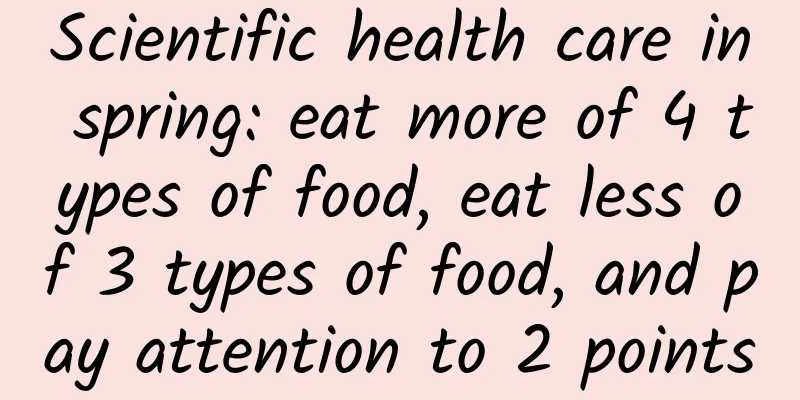How "sad" is smoking?

|
Dig deep into a smoker’s bucket list and you’ll likely find one item on it: quitting smoking. In fact, more than four-fifths of current smokers have tried to quit at least once, or dozens of times. Because the road to quitting is long and winding, many people compromise by cutting back on the number of cigarettes they smoke each day. Unfortunately, cutting back on the number of cigarettes you smoke does not reduce the long-term risks of smoking, including heart disease and cancer. Even a few cigarettes a day can increase your risk of heart disease and premature death[1]. You may have heard that smoking increases the incidence of lung cancer. Most people now realize that tobacco use increases the risk of cancer, but they are less aware of the risk of cardiovascular disease caused by tobacco use. The results of the Global Adult Tobacco Survey show that in China, 73% of adults do not believe that smoking causes stroke and 61% do not believe that smoking causes heart attack[2]. What we need to know is that tobacco smoke contains more than 7,000 chemical substances, which are divided into two states: particle phase and gas phase. Particle smoke contains a familiar substance, nicotine, a highly addictive substance associated with increased heart rate, blood pressure, and increased myocardial contractility, as well as total aerosol residue (tar), which together can cause heart disease through the following pathways: inflammation, endothelial damage (the lining of blood vessels), increased thrombosis, and decreased high-density lipoprotein cholesterol levels. Gas phase smoke contains carbon monoxide and other toxic gases. Carbon monoxide will replace oxygen in the blood, reducing the oxygen supply to the heart muscle and other body tissues. These pathophysiological effects of tobacco predispose both smokers and passive smokers to the development of atherosclerosis or arterial stenosis, leading to various cardiovascular diseases such as ischemic heart disease, cerebrovascular disease, peripheral arterial disease and aortic aneurysm. It is important to note that all tobacco products are harmful, including smokeless tobacco, which contains more than 2,000 compounds, including nicotine. Heavy metals such as cadmium and other substances contained in smokeless tobacco products, as well as additives such as licorice or punk ash, can have adverse effects on the cardiovascular system. Smokeless tobacco may also cause heart disease by sharply increasing blood pressure and inducing chronic hypertension, and is associated with fatal myocardial infarction and stroke. Electronic cigarettes, also known as atomizers, e-cigarettes or atomizers, are electronic nicotine delivery systems that are battery-powered devices that heat a solution or e-liquid to produce an aerosolized mixture of flavoring liquid and nicotine for the user to inhale. They also emit a variety of potentially harmful and toxic chemicals that can cause a range of significant pathological changes. The cardiovascular system is very sensitive to nicotine and other harmful chemicals, and the body can be directly affected by electronic nicotine delivery systems (such as narrowing of arteries, increased heart rate and blood pressure). Evidence to date suggests that e-cigarettes generally contain less toxic substances than cigarette smoke. However, long-term use of e-cigarettes still increases the risk of chronic obstructive pulmonary disease, lung cancer and cardiovascular disease, as well as some other diseases related to smoking. A study by Harvard Medical School showed that the more cigarettes a person smokes and the longer they smoke throughout their life, the more likely they are to have thicker heart walls, more severe damage, and a greater risk of heart failure. The good news is that the negative effects of smoking on the heart wall can be reversed after quitting smoking [3]. WHO recommends effective medicines for smoking cessation, such as nicotine replacement therapy, bupropion or varenicline, to help tobacco users quit. In addition, the following are the changes in physical condition after quitting smoking: Within 20 minutes, the heart rate slows and blood pressure drops; Within 12 hours, carbon monoxide in the blood drops to normal levels; After 2-12 weeks, blood circulation improved and lung function increased; After 6 weeks of quitting smoking, 97% of oral leukoplakia lesions completely disappeared; Cough and shortness of breath improve within one to nine months after quitting smoking; One year after quitting smoking, the risk of coronary heart disease is reduced by about half compared to smokers. One to four years after stopping smokeless tobacco use, the risk of death is reduced by nearly half compared to continuing users; Five to fifteen years after quitting smoking, the risk of stroke is comparable to that of non-smokers; Ten years after quitting smoking, the risk of lung cancer drops to about half that of smokers, and the risk of cancers of the mouth, throat, esophagus, bladder, cervix, and pancreas is reduced; Fifteen years after quitting smoking, the risk of coronary heart disease is comparable to that of people who have never smoked. People of all ages who have already developed health problems related to tobacco use can still benefit from quitting. Benefits compared to continued tobacco use: Around 30 years old: life expectancy increases by nearly ten years; Around 40 years old: nine years of life expectancy added; Around age 50: six years of life expectancy added; Around age 60: Increase life expectancy by three years[2]. References 1. Tan Lingxi. One cigarette is too much: the harm of light smoking[J]. Cardiovascular disease prevention and treatment knowledge (popular science version), 2017(11):30-31. 2. How does tobacco harm the heart?[J]. Health Education and Health Promotion, 2018, 13(03): 288-290. 3. Smoking increases the risk of heart failure[J]. Hunan Journal of Traditional Chinese Medicine, 2018, 34(04):38. |
<<: What are the dangers of putting onions in the refrigerator? What can onions be fried with?
>>: Why is my laptop so slow? Is it helpful to reinstall the system if my laptop is so slow?
Recommend
Is it normal to have your period 9 days early?
Early menstruation is actually a sign of physical...
Does bleeding during intercourse need to be treated?
Intrauterine ring is a method of contraception us...
What should pregnant women do if they get acne due to internal heat?
It is a common phenomenon for pregnant women to g...
Does raw Pu'er tea need to be boiled? What is the correct way to drink cooked Pu'er tea?
Pu'er tea is produced in Xishuangbanna, Linca...
Can I eat bacon during menstruation?
Menstruation is a very important festival for wom...
What is the reason for increased leucorrhea without odor?
Girls are a relatively special group, because if ...
Why does the inside of an avocado turn black? How to choose an avocado
Avocados mature between August and September each...
How to relieve back pain during menstruation
I believe that many female friends not only exper...
Can a 38-day-old baby be taken out? What are the precautions for taking a 38-day-old baby out?
We all know that babies are weak and have poor re...
Is it okay for pregnant women to eat preserved eggs once?
Seeing the baby in the belly grow day by day is t...
A preliminary study on autism spectrum disorder: Children from the stars
In the vast universe, there is a group of special...
How to judge whether furniture contains formaldehyde? Where does formaldehyde usually exist in furniture?
We all know that furniture is an indispensable pa...
Is the afternoon pregnancy test more accurate?
Female friends should be very familiar with pregn...
Breast pain, nipple enlargement and hardening
Whether from the perspective of aesthetics or phy...
Vaginitis acupuncture points
The incidence of vaginitis is becoming more and m...









